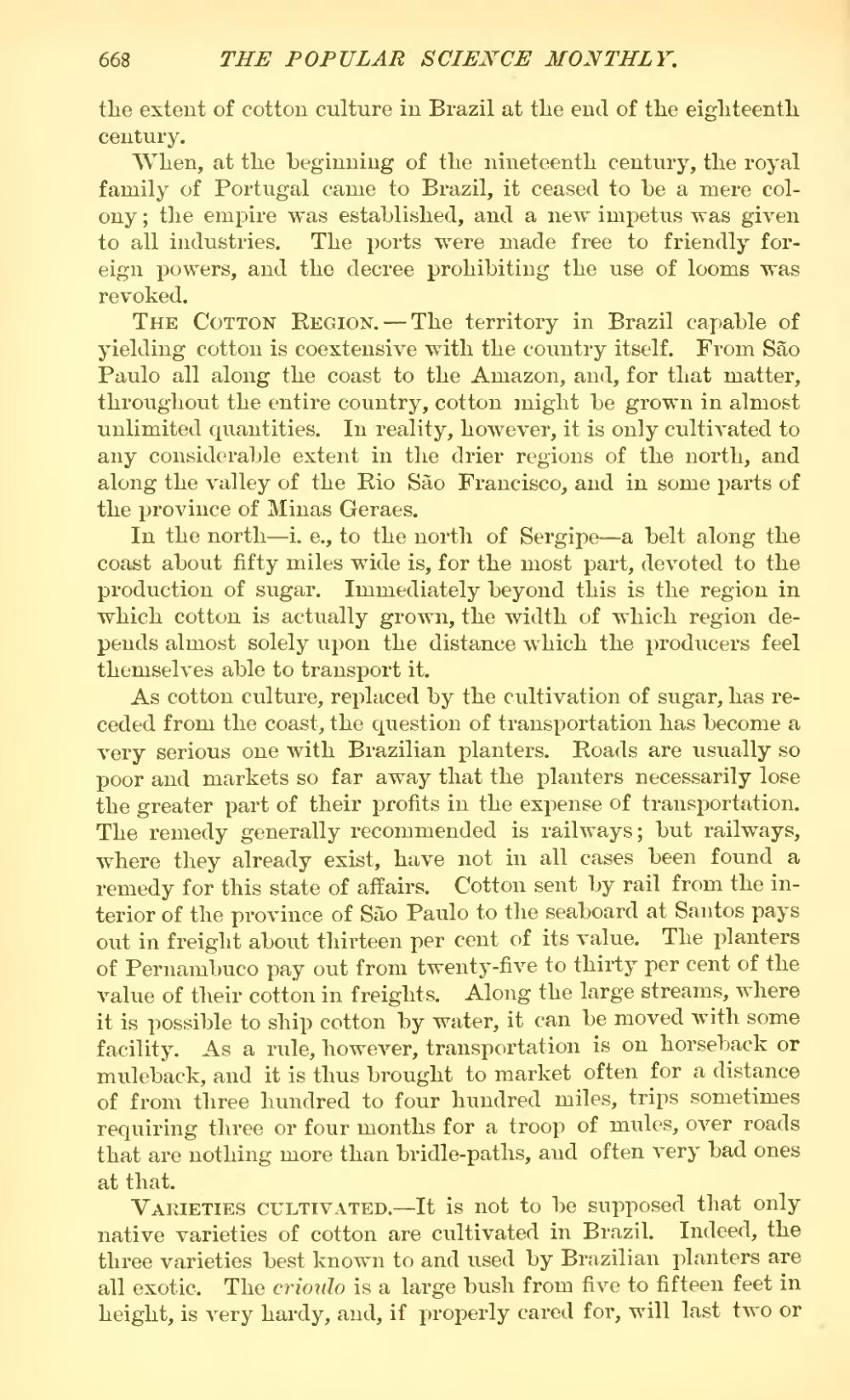the extent of cotton culture in Brazil at the end of the eighteenth century.
When, at the beginning of the nineteenth century, the royal family of Portugal came to Brazil, it ceased to be a mere colony; the empire was established, and a new impetus was given to all industries. The ports were made free to friendly foreign powers, and the decree prohibiting the use of looms was revoked.
The Cotton Region.—The territory in Brazil capable of yielding cotton is coextensive with the country itself. From Sao Paulo all along the coast to the Amazon, and, for that matter, throughout the entire country, cotton might be grown in almost unlimited quantities. In reality, however, it is only cultivated to any considerable extent in the drier regions of the north, and along the valley of the Rio São Francisco, and in some parts of the province of Minas Geraes.
In the north—i. e., to the north of Sergipe—a belt along the coast about fifty miles wide is, for the most part, devoted to the production of sugar. Immediately beyond this is the region in which cotton is actually grown, the width of which region depends almost solely upon the distance which the producers feel themselves able to transport it.
As cotton culture, replaced by the cultivation of sugar, has receded from the coast, the question of transportation has become a very serious one with Brazilian planters. Roads are usually so poor and markets so far away that the planters necessarily lose the greater part of their profits in the expense of transportation. The remedy generally recommended is railways; but railways, where they already exist, have not in all cases been found a remedy for this state of affairs. Cotton sent by rail from the interior of the province of São Paulo to the seaboard at Santos pays out in freight about thirteen per cent of its value. The planters of Pernambuco pay out from twenty-five to thirty per cent of the value of their cotton in freights. Along the large streams, where it is possible to ship cotton by water, it can be moved with some facility. As a rule, however, transportation is on horseback or mule-back, and it is thus brought to market often for a distance of from three hundred to four hundred miles, trips sometimes requiring three or four months for a troop of mules, over roads that are nothing more than bridle-paths, and often very bad ones at that.
Varieties cultivated.—It is not to be supposed that only native varieties of cotton are cultivated in Brazil. Indeed, the three varieties best known to and used by Brazilian planters are all exotic. The crioulo is a large bush from five to fifteen feet in height, is very hardy, and, if properly cared for, will last two or
